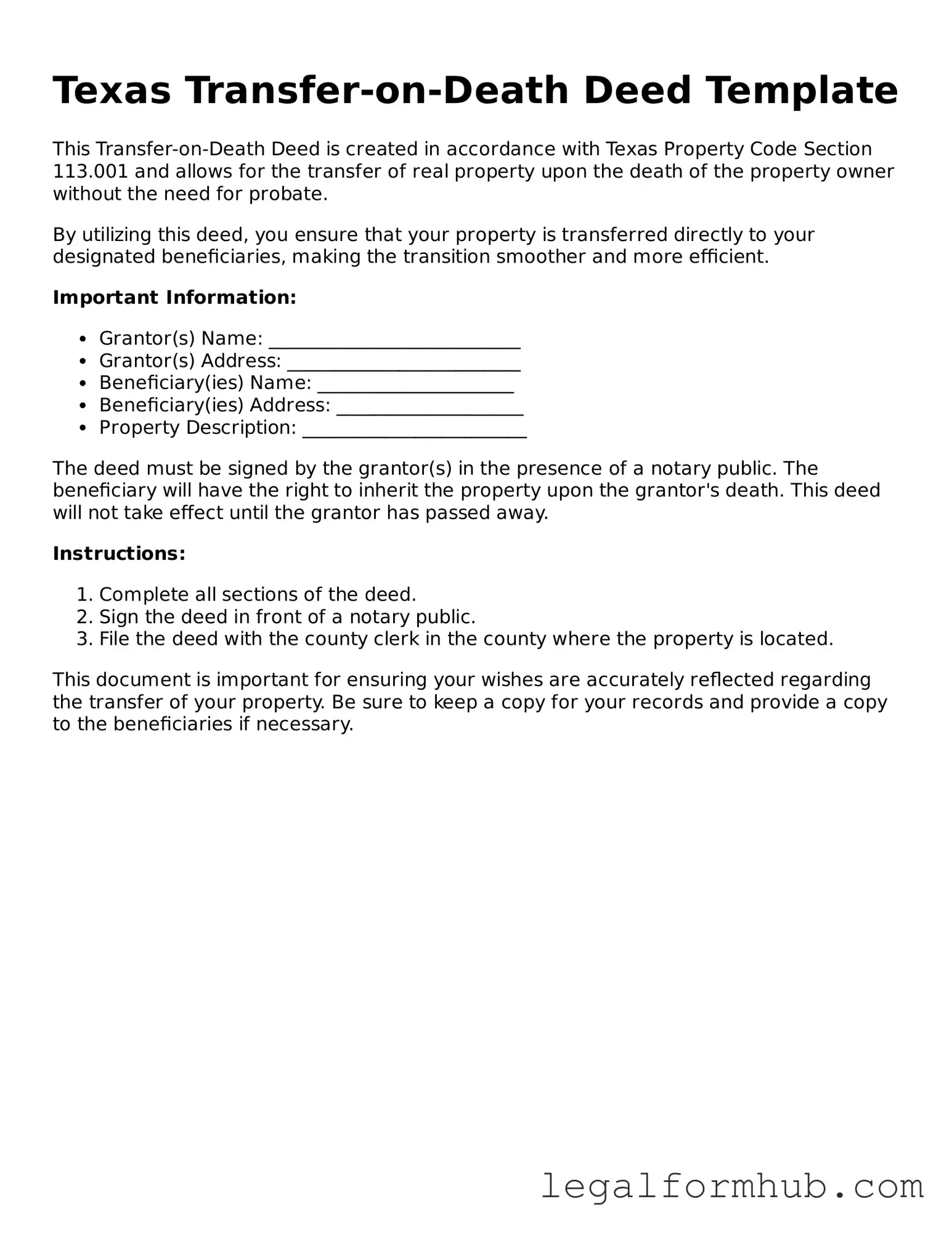Free Transfer-on-Death Deed Template for Texas
The Texas Transfer-on-Death Deed form is a legal document that allows property owners to designate beneficiaries who will receive their property upon their death, bypassing the lengthy probate process. This simple yet effective tool can provide peace of mind and ensure that your assets are transferred according to your wishes. Understanding how to properly utilize this form is essential for anyone looking to secure their legacy.
Open Transfer-on-Death Deed Editor Here
